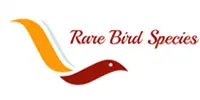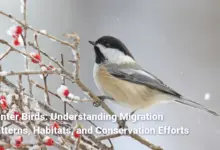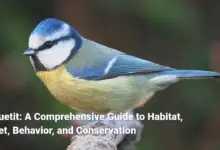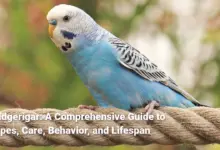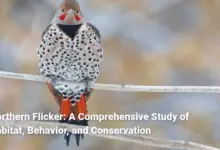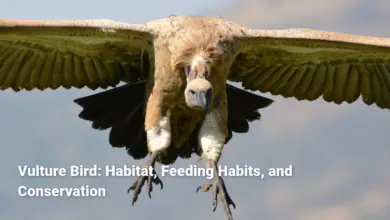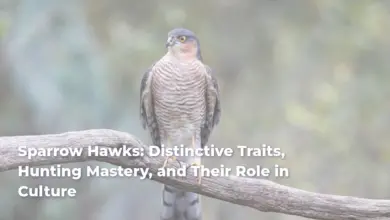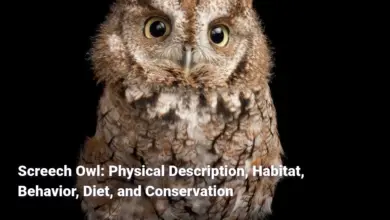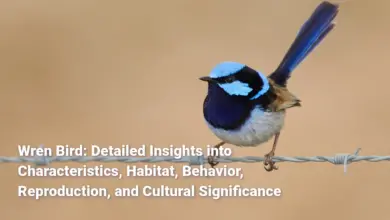Snow Goose in Focus: Habitats, Feeding Habits, and Fascinating Facts
Discover the Snow Goose: Habitats, Behavior, and Ecological Importance.
Snow Goose (Anser caerulescens) are captivating birds known for their spectacular migrations, distinctive vocalizations, and dynamic social structures. Renowned for their striking white plumage, with a slightly darker blue morph, these birds paint a picturesque scene across the North American landscape as they traverse vast distances between their breeding and wintering grounds. Their journey is not just a testament to their natural instincts, but a dance of survival intricately linked with seasonal changes, vegetation cycles, and human agricultural practices.
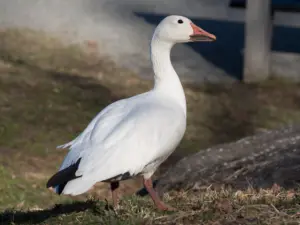
With a diet primarily composed of plant material, Snow Goose exhibit adaptability that allows them to thrive in various environments, making them a species of interest for ecologists and birdwatchers alike. Their migratory behavior, social dynamics during breeding, and the conservation challenges they face further embellish their fascinating story. However, amidst the wonder lies a pressing need for understanding and protecting these birds, who contribute significantly to the ecosystems they inhabit.
In this article, we will delve into the multifaceted world of Snow Goose, exploring their habitats, diets, behaviors, and the ongoing efforts to conserve their populations, weaving together facts and observations that underscore their importance in our natural world.
Habitat of Snow Goose
Snow Goose are versatile creatures that thrive across a range of habitats depending on the season and their life cycle stages. To understand their habitat preferences, it is crucial to appreciate how these birds, like skilled travelers, adapt to the diverse landscapes they encounter.
During the breeding season, primarily in the tundra regions of northern Canada and parts of Alaska, Snow Goose favor low grassy plains near water sources. These areas offer a haven from predators and a rich array of plants essential for nesting and feeding. Here, they establish their territories, giving rise to the next generation amidst the pristine beauty of the Arctic tundra.
In contrast, during the winter months, Snow Goose migrate southwards, transforming their habitat preferences dramatically. Agricultural lands become temporary sanctuaries, where leftover grains from crops such as corn, wheat, and oats act as a buffet. Wetlands and coastal lagoons also become vital stopping points, providing essential food and resting areas along their routes. This duality in their habitat showcases their remarkable adaptability, allowing them to thrive in both inhospitable tundra and the more temperate agricultural plains of the United States.
| Season | Breeding Habitat | Winter Habitat |
|---|---|---|
| Spring/Summer | Tundra regions (Canada, Alaska) | Agricultural fields, wetlands |
| Characteristics | Low grassy plains near water | Fields with leftover crops, wetlands |
The snow goose’s ability to adapt to different habitats is not just a matter of survival; it’s a fascinating interplay between their needs and the seasonal availability of resources, echoing the changing rhythms of nature around them.
Typical Environments of the Snow Goose
Snow Goose exhibit a well-defined preference for environments that provide essential resources throughout their migratory journey. Breeding grounds in the Arctic tundra are characterized by short summers that create a brief window for nesting and feeding. The landscape is a vast quilt of grassy plains, wetlands, and low-lying vegetation, offering abundant forage for both adult geese and their goslings.
During this season, the idyllic surrounding of shimmering water bodies serves as both a source of food and a protective barrier from predators. The interconnectedness of water and land is akin to a symbiotic relationship, where these birds rely on the submerged roots and shoots of aquatic plants to sustain themselves and nurture their young. As summer encroaches, the vibrant energy of the Arctic signifies the urgency for Snow Goose to fully exploit these resources before returning south.
Conversely, in winter habitats, agricultural fields transform into vital refuges. Here, Snow Goose can often be spotted foraging zealously over corn and wheat fields like determined hunters on a quest for sustenance. Wetlands become temporary resting spots where they regroup during prolonged migrations.
These varied habitats reflect the resilience of Snow Goose and their ability to thrive under diverse conditions. By occupying both the harsh Arctic tundra and the welcoming fields of the southern United States, they demonstrate that adaptability is one of nature’s most valuable assets. This adaptability ensures their survival amidst the challenges posed by climate change and habitat loss, reminding us of the intricate balances sustaining the ecosystems they inhabit.
Seasonal Migration Patterns of the Snow Goose
The seasonal migration patterns of Snow Goose are among the most celebrated avian journeys in North America, symbolizing resilience and the unfathomable depth of nature’s rhythms. With a remarkable instinct guiding them, these birds embark on an extensive journey that reflects the intricate interplay between their breeding and wintering habitats.
Spring migration typically commences as early as February, when Snow Goose take flight from southern parts of the United States toward their northern breeding territories. This odyssey often involves several stopovers, allowing them to refuel and recharge along the way. For them, each stop is an opportunity to forage, adding nourishment for the long haul ahead.
By late May, after weeks of voyaging across diverse landscapes, Snow Goose finally arrive at their pristine tundra breeding grounds. This migration, characterized by beautiful V-shaped formations in the sky, showcases not only their unity as a flock but also an evolutionary advantage in conserving energy. The way they navigate thousands of miles, bewildering human observers with their patterned movements, resembles a concerted dance in the sky that resonates with the natural world’s harmony.
As summer wanes, the cycle reverses, and by September, the rhythm of nature beckons yet again. Snow Goose begin their southward trek, flocking together for safety and camaraderie as they traverse vast distances toward milder climates inhabited by agricultural resources. Concluding this migration by December, they settle into winter habitats rich with leftover crops and abundant food sources, which serve their insatiable appetite before the cycle resumes once more.
Throughout this migratory journey, Snow Goose embody the essence of freedom and exploration, traversing from tundra summers to balmy winters, revealing that the flight of the snow goose is more than mere survival it’s a compelling narrative of life, endurance, and interdependence with the environments they navigate.
Snow Goose Diet and Feeding Habits
Snow Goose are primarily herbivorous, demonstrating a remarkable ability to adapt their diets to the changing availability of food resources throughout different seasons. With a constant quest for sustenance, they traverse vast landscapes, foraging in both wild habitats and agricultural fields, forming a vital link between nature and human agriculture.
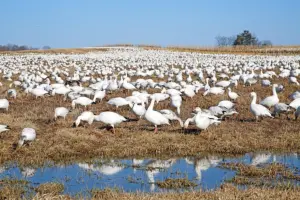
Their primary food sources range from grasses and sedges found in their Arctic breeding grounds to leftover grains in the southern fields. During the breeding season, they primarily consume abundant grass species and aquatic vegetation, forming a diet rich in essential nutrients. The close connection between their foraging behavior and the health of their breeding habitats serves as a reminder of the delicate balance they maintain within ecosystems.
In the winter months, Snow Goose transform their foraging habits dramatically, leveraging agricultural lands as they journey south. The pursuit of leftover crops corn, wheat, soybeans, and oats represents a strategic adaptation to seasonal changes as they take advantage of human agricultural practices.
- Grass and Sedges: Consumed during breeding, together with roots and leaves from plant species available in spring and summer.
- Agricultural Crops: Vital during winter migration where they forage on leftover grains.
- Insects: Young goslings supplement their diets with insects and larvae, highlighting the importance of protein during their early stages of development.
This duality in feeding habits highlights the snow goose’s remarkable adaptability. Their ability to thrive in varied environments speaks to the resilience of wildlife, showcasing the intricate interplay between species and their habitats. For Snow Goose, the search for food is not merely a quest for survival; it’s a quest for ecological balance, thriving alongside the changing seasons.
Primary Food Sources of the Snow Goose
The diverse diet of Snow Goose is a testament to their adaptability and resourcefulness. As they traverse a wide range of habitats throughout the year, their sourcing of food illustrates a remarkable ability to thrive across different ecosystems.
- Grasses and Sedges: On their northern breeding grounds, Snow Goose consume a variety of grasses, including American bulrush, which they graze on during the warmer months. These plants serve as a foundation for their diet, providing necessary nutrients for both adults and goslings.
- Agricultural Crops: In winter and during migration, agricultural fields become strategic feeding grounds. Snow Goose often feed on leftover grains from crops, including corn, wheat, and soybeans. This availability of food, particularly in southern regions, is critical for energy replenishment.
- Aquatic Vegetation: Snow Goose also consume various aquatic plants, exploring wetlands and marshes where they find water lily pads and submerged grasses. This contributes to their diet during both breeding and migratory periods.
- Berries and Fruits: While primarily herbivorous, Snow Goose will opportunistically consume fruits and berries when they are in season, adding valuable vitamins to their diets.
- Insects and Larvae: Early-stage goslings often require additional protein sources for growth, prompting them to seek out insects and fly larvae during their early diets. This adaptability is crucial for their development.
| Food Source | Availability | Nutritional Benefits |
|---|---|---|
| Grasses and Sedges | Spring/Summer | Essential nutrients |
| Agricultural Crops | Winter | High energy |
| Aquatic Vegetation | Year-round | Vitamins and minerals |
| Berries and Fruits | Seasonal | Supplementary nutrition |
| Insects and Larvae | Early Development | Protein for growth |
This eclectic mix of food sources provides Snow Goose with the nutritional diversity necessary to thrive within both wild and agricultural landscapes. Their dynamic feeding habits not only showcase their adaptability but also highlight the intricate relationships between wildlife and the ecosystems they inhabit.
Feeding Techniques
Snow Goose employ a variety of feeding techniques to maximize their foraging efficiency, demonstrating not only adaptability but also a keen understanding of their environments. This multifaceted approach to feeding underscores their survival skills and the synergy between their dietary needs and the resources available.
- Grazing: Ground foraging is a predominant technique observed among Snow Goose. They are typically seen grazing in large flocks, allowing them to cover vast areas efficiently. Grazing together in groups increases their chances of finding abundant food resources and decreases the risk of predation, echoing the collective strategies employed by many social animals.
- Grubbing: During feeding, especially in spring on breeding grounds, Snow Goose also engage in “grubbing.” This behavior involves digging through the soil to access tubers or other hidden vegetation, akin to a treasure hunt where the rewards are hidden beneath the surface. This technique highlights their resourcefulness and determination to find necessary sustenance.
- Vocal Communication: The social nature of Snow Goose allows for effective communication while foraging. Various vocalizations from honks to clucks serve different purposes, informing fellow geese about safety and alerting them to feeding opportunities. These sounds enhance flock cohesion, ensuring a unified approach to feeding amidst the potential threats posed by predators.
- Switching Feeding Strategies: Snow Goose are not set in one way of foraging; rather, they switch their feeding techniques based on environmental factors. For instance, they may focus more on agricultural crops during winter when natural food sources are scarce while relying on grassy sedges in breeding grounds.
- Social Foraging: Their sociable nature plays a significant role in their foraging success. By working together, Snow Goose can efficiently exploit large feeding areas, communicating effectively to share information on the best foraging spots.
These feeding techniques illustrate the snow goose’s ingenuity and adaptability in different environments. By utilizing collaborative strategies and diverse methods of foraging, they not only secure their own food but also play an important role in the ecosystems they inhabit.
Snow Goose Behavior and Social Structure
Snow Goose exhibit intriguing behavior and social structures that play a pivotal role in their survival. These dynamic birds thrive in groups, forming complex social networks that enhance their interactions and cooperative behaviors throughout their life stages.
Snow Goose are monogamous and typically form lifelong partnerships. They choose a single mate and remain together to raise their young, sharing the responsibilities of nesting and caring for goslings. This commitment mirrors the strength of their social bonds and reflects the importance of collaboration in ensuring the well-being of their offspring. It is not just about individual survival; their bond contributes to the success of the entire brood.
During the breeding season, Snow Goose engage in elaborate courtship rituals. These rituals are characterized by vocalizations, synchronized movements, and mutual preening, creating an enchanting display that strengthens the bond between partners. The male often showcases confidence through specific body postures, signaling readiness to mate, akin to a dance performed to unite two souls.
Socially, Snow Goose travel in large, noisy flocks, particularly during migration. These flocks are vital for their survival, as they ensure safety in numbers and offer protection from potential predators. Within these groups, individuals retain close-knit social connections, enhancing the effectiveness of communication, particularly when alerting others to danger.
Here are some key aspects of snow goose behavior:
- Flocking Behavior: Snow Goose are known for forming large flocks, particularly during migration and winter months. This makes them a splendid sight for birdwatchers and showcases their collective strength.
- Cooperative Feeding: Their social structure allows for cooperative feeding strategies, maximizing foraging efficiency and safety while searching for food.
- Vocal Communication: Communication is a cornerstone of their social behavior. Vocalizations among Snow Goose serve purposes such as alerting others about threats and coordinating movement as they travel together.
- Parental Roles: Both parents are actively involved in caring for their goslings, sharing responsibilities that ensure the survival of their offspring during vulnerable stages of life.
Through their fascinating social structures and cooperation, Snow Goose embody the essence of teamwork and resilience. Their behaviors highlight not only their adaptability to nature’s challenges but also the remarkable connections that bind individuals together in the avian world.
Mating Rituals
The mating rituals of Snow Goose are a captivating spectacle filled with intricate behaviors that reflect their social structures and commitment to family. Their courtship process is characterized by elaborate displays of affection and mutual compatibility, enhancing the bond between partners.
As winter transitions into spring, Snow Goose engage in a series of courtship rituals that often commence well ahead of the arrival at breeding grounds. Males initiate these mating displays, which involve a combination of vocalizations, head bobbing, and specific postures that showcase their readiness and fitness to mate. Each movement is deliberate, designed to impress potential mates by showcasing vigor and health qualities critical for reproductive success.
Once a pair has formed, mutual preening becomes a central aspect of their bond. This behavior is not merely for hygiene; it serves to reinforce trust and strengthen emotional connections. Similar to human relationships, this mutual grooming conveys affection and the deepening of their partnership, creating a reinforced commitment to co-parenting.
The actual mating act typically takes place in water. This reliance on aquatic settings underscores the importance of these environments in their life cycle. During this ritual, pairing movements are synchronized, akin to a well-choreographed dance that reflects their unity as a couple.
Another noteworthy aspect of their mating behavior is the territorial nature exhibited during breeding. Males often defend their nesting area against rival males, showcasing a fierce dedication to safeguarding their future progeny. This protective behavior is rooted in evolutionary strategies aimed at ensuring the success of their offspring.
The mating rituals of Snow Goose combine a rich tapestry of behaviors that reflect their evolutionary heritage and social structures. The synergy between vocal displays, physical expressions, and territoriality mirrors not only the beauty of their relationship but also emphasizes their commitment to nurturing and protecting future generations.
Flock Dynamics
The dynamics of snow goose flocks are an embodiment of social complexity that facilitates their survival and mobility amidst sprawling ecosystems. Understanding these flock behaviors offers insights into their interactions, communication, and overall social structure.
At the heart of snow goose flock dynamics is a hierarchical organization, where dominant individuals often delineate roles within the group. This hierarchy ensures access to precious resources, such as food and nesting grounds, with higher-ranking geese enjoying first access. This structure enables a level of order within their social groups, vital for survival during migration and winter months.
Communication forms the backbone of flock cohesion, enabling Snow Goose to thrive in groups. They produce a diverse range of vocalizations honks, clucks, and barks that convey emotions, intentions, and warnings. This sophisticated verbal repertoire fosters a sense of awareness, allowing members to coordinate movements during migration and react swiftly to potential threats.
Moreover, Snow Goose exhibit remarkable social behaviors such as “lookout” functions during foraging. Some members of the flock take on the role of sentinels, watching for predators while others feed, demonstrating a nuanced approach to safety and resource exploitation. These lookout geese signal danger, allowing the rest of the flock to respond appropriately, showcasing their collective intelligence.
Additionally, breeding pair fidelity significantly impacts flock dynamics. Pairs typically mate for life, strengthening the social fabric of the flock. Their bond contributes to cooperative behaviors, such as jointly raising goslings and defending nesting territories a reflection of their long-term commitment.
Through this rich tapestry of social interactions, the flock dynamics of Snow Goose encapsulate the essence of cooperation and mutual support. Their ability to work together through vocal communication, hierarchical structure, and collective behaviors emphasizes the intricate relationships that define their lives as they navigate an ever-changing environment.
Snow Goose Conservation Status
The conservation status of Snow Goose is a complex narrative of resilience and ecological challenges. Once listed as being at risk due to declining populations, Snow Goose have undergone a remarkable recovery owing to adaptive management practices. However, this remarkable resurgence brings to light new conservation issues that need addressing.
Currently, the populations of Snow Goose are estimated to be stable or even increasing in certain regions. Factors contributing to their recovery include successful habitat management, regulated hunting practices, and the availability of agricultural lands that provide ample food resources during migration. Nevertheless, the soaring population levels raise concerns about the sustainability of their breeding habitats.
One of the primary challenges Snow Goose face is habitat degradation. With their rapid increase in numbers, there have been substantial impacts on the Arctic tundra, where the intensity of their foraging has led to overgrazing and a decline in vegetation. This phenomenon poses a significant risk not just to the geese themselves, but also to the delicate ecosystems that depend on the same habitats.
Additionally, climate change has introduced new uncertainties, as changing weather patterns can impact migratory routes and food availability. The delicate balance within their habitats is threatened, and mitigating these risks requires conservationists to adapt management strategies continually.
Conservation efforts for Snow Goose are multifaceted and ongoing. These initiatives involve:
- Habitat Restoration: Protecting and restoring breeding and wintering habitats is vital to ensure long-term survival.
- Monitoring Populations: Continuous research and monitoring by various organizations provide data to guide decisions on hunting regulations and habitat conservation.
- Regulated Hunting: Adaptive hunting regulations established in response to population changes aim to mitigate overpopulation effects.
Through continued efforts to monitor, protect, and manage snow goose populations, we can work toward a sustainable future that balances wildlife needs with ecological integrity.
Threats to the Population
Several key threats impact the snow goose population, primarily revolving around habitat loss, overpopulation, and hunting pressures. Understanding these threats highlights the urgency of ongoing conservation efforts.
- Habitat Loss: The degradation and loss of breeding and wintering habitats are primary threats to snow goose populations. The draining of coastal marshes and wetlands, particularly in the Gulf Coast, has significantly altered the habitats Snow Goose depend on. These lost areas force geese to seek food in agricultural lands, leading to increasing populations there and potential habitat degradation.
- Overpopulation: The shift of Snow Goose to agricultural lands has resulted in unchecked population growth, creating an imbalance in ecosystems. Overabundant geese can lead to destructive foraging behaviors that negatively impact their breeding environments. The competition for resources in their Arctic breeding grounds can also disrupt established plant communities, thereby affecting other wildlife species.
- Hunting Pressures: Although hunting is regulated, existing hunting practices have struggled to effectively control snow goose populations. Despite efforts to liberalize hunting laws, only a small percentage of adults are usually harvested each year. This limited success in population management exacerbates the issues stemming from overpopulation and habitat strain.
- Climate Change: Although not an immediate threat, the long-term impacts of climate change pose a significant risk to Snow Goose. Shifting weather patterns can disrupt migratory flows, alter habitat availability, and affect food sources critical for their survival.
In summary, addressing these threats through targeted conservation measures will be crucial for ensuring the future stability of snow goose populations. By focusing on habitat protection, effective management strategies, and public awareness, we can mitigate threats and support thriving ecosystems for Snow Goose and other wildlife.
Conservation Efforts
Efforts to conserve and manage snow goose populations have become increasingly vital due to the ongoing challenges they face. These initiatives, informed by scientific research and monitoring, emphasize the importance of sustaining not just the species but also the ecosystems in which they thrive.
1. Regulated Hunting Seasons: In response to the growing populations, state and federal agencies have implemented specialized hunting regulations to manage the numbers. By extending hunting seasons and allowing for greater harvests, these measures aim to create a balance that curtails overpopulation while ensuring the sustainability of snow goose populations.
2. Habitat Protection Initiatives: Protecting breeding and wintering localities is paramount. Conservation organizations work tirelessly to establish protected areas, restore degraded habitats, and promote sustainable agricultural practices that accommodate the needs of Snow Goose.
3. Research and Monitoring: Conducting ongoing research to decipher migration patterns, nesting success rates, and population dynamics is fundamental for effective management. Collaborations between academic institutions, government agencies, and conservation organizations facilitate the collection of critical data that informs adaptive management approaches.
4. Public Engagement and Education: Raising awareness within the community about the ecological significance of Snow Goose amplifies conservation efforts. Educational campaigns encourage responsible wildlife watching and provide insights into the interconnected nature of ecosystems, fostering a sense of stewardship among the public.
As we continue to confront the challenges facing snow goose populations, prioritizing collaboration between stakeholders and fostering conservation efforts is essential. Only through collective action can we create sustainable environments that allow Snow Goose to flourish and coexist alongside other species within their ecosystems.
Interesting Facts About Snow Goose
Snow Goose, Anser caerulescens, are a treasure trove of unique characteristics and remarkable adaptations that enhance their survival and ecological role. Here are some fascinating facts about these incredible birds:
1. Color Morphs
Snow Goose exhibit two distinct color phases: the common white morph and the lesser-known blue morph. This genetic variation is controlled by a single dominant gene, allowing for remarkable interbreeding within populations.
2. Rapid Growth Rate
Snow goose goslings are precocial, able to walk shortly after hatching. Within days, they can regulate their body temperature independently, allowing them to adapt quickly in their environments.
3. Vocalizations
Snow Goose are highly vocal, employing a range of honking sounds to communicate with flock members. Their calls can travel over a mile, facilitating crucial communication, especially within large flocks.
4. Epic Migrations
Snow Goose undertake incredible migrations, often traveling over 3,000 miles from their wintering grounds in southern U.S. states to their Arctic breeding territories, showcasing remarkable endurance and navigation skills.
5. Lifespan
The oldest recorded snow goose reached the remarkable age of 30 years, exemplifying the potential for longevity in stable and protected environments.
| Interesting Fact | Description |
|---|---|
| Color Morphs | White morph and blue morph variations due to genetics |
| Rapid Growth Rate | Goslings can walk and self-regulate temperature shortly after hatching |
| Vocalizations | Vocal communication can carry over a mile |
| Epic Migrations | Travels over 3,000 miles during seasonal migrations |
| Lifespan | Recorded longevity of up to 30 years |
These intriguing facts about Snow Goose not only highlight their unique characteristics but also underscore their adaptability, resilience, and ecological importance within their native habitats.
Unique Adaptations
Snow Goose exhibit remarkable adaptations that allow them to thrive in their varied environments. These adaptations can be linked to their feeding behaviors, social structures, and migratory patterns, showcasing the versatility of this species.
1. Coloration Variability
The presence of both white and blue morphs in Snow Goose is a fascinating adaptation. This genetic diversity may provide advantages in different habitats, potentially allowing them to blend in with specific environments better, such as snow-covered landscapes or darker foliage.
2. Efficient Migratory Behavior
Snow Goose are known for their energy-efficient migratory techniques. The V-shaped flying formation, a hallmark of their travel, allows them to save energy by taking advantage of the updraft created by the birds in front. This adaptation enhances their endurance during migration, ensuring they can undertake long, continuous flights.
3. Digestive Adaptations
Due to their primarily herbivorous diet, Snow Goose possess digestive systems adapted to process fibrous plant material efficiently. Their ability to digest and extract nutrients from tough grasses and grains is critical during long migratory periods when food may be scarce.
4. Rapid Gosling Development
The precocial nature of snow goose goslings being able to walk shortly after hatching and quickly adapt to environmental conditions allows them to navigate potential dangers immediately. This trait enhances their survival chances during critical early life stages.
5. Social Foraging Strategies
Snow Goose utilize cooperative foraging techniques that allow for increased efficiency. By foraging in large groups, they can cover vast areas more effectively while maintaining vigilance against predators. This collective behavior not only promotes safety but also enhances their overall foraging success.
These unique adaptations demonstrate the snow goose’s impressive evolutionary traits, contributing to their survival and success across diverse habitats. They are a powerful reminder of the intricate relationships among species and their dependence on their environments for continued existence.
Cultural Significance
Snow Goose hold significant cultural importance, drawing the interest of indigenous peoples and conservationists alike. These birds have raised awareness about the impacts of environmental changes, migratory behaviors, and the delicate balance within ecosystems.
1. Symbol of Migration
In various Indigenous cultures across North America, Snow Goose symbolize migration and resilience. Their seasonal journeys reflect the cycles of nature, inspiring traditional hunting practices, art forms, and storytelling narratives that impart lessons about the relationship between humans and the environment.
2. Birdwatching Spectacle
The migration of Snow Goose is considered one of the most magnificent wildlife spectacles in North America. Birdwatchers and nature enthusiasts flock to known migration routes, where thousands of Snow Goose fill the skies with their honking calls and dynamic formations. Observing these birds in action fosters a connection between people and nature.
3. Ecological Indicators
As migratory waterfowl, Snow Goose serve as indicators of environmental health. Changes in their migration timing, populations, and breeding success can signal broader ecological shifts. Understanding these indicators helps inform conservation strategies and monitor the impacts of climate change.
4. Cultural Festivals
In regions where Snow Goose congregate, festivals celebrating their migration phenomenon often take place. These gatherings not only highlight the beauty of nature but also foster community involvement and awareness around conservation efforts.
5. Conservation Narratives
Snow Goose are emblematic of the delicate balance between human activity and wildlife conservation. Their movement into agricultural lands signifies a need for sustainable practices that accommodate both farming and habitat protection, inspiring discussions about environmental stewardship.
These elements of cultural significance underscore the snow goose’s role in fostering connections between people and nature, encouraging a deeper appreciation for wildlife and the ecosystems they inhabit.
Snow Goose Observations
Snow Goose provide birdwatchers with extraordinary opportunities for observation, both in their stunning migratory formations and varied habitats. Their presence captivates nature enthusiasts, making them a popular subject for observation and study.
1. Best Locations for Birdwatching
Numerous locations across North America are renowned for outstanding visibility of Snow Goose during their migratory journeys. Here are some of the top birdwatching hotspots:
- Central Valley, California: Known for its wetlands and agricultural fields, this region attracts vast flocks of Snow Goose, especially during migration seasons. The Sacramento National Wildlife Refuge is particularly famous for observations.
- Great Salt Lake, Utah: This area features extensive wetlands that serve as crucial stopover points for migrating Snow Goose. The best viewing often occurs during peak migration in early spring and late fall.
- Bosque del Apache National Wildlife Refuge, New Mexico: This refuge is a prime spot for observing both Snow Goose and sandhill cranes. The winter months depict breathtaking scenes of flocks converging to roost and forage.
- Mississippi Flyway: This major migratory route traverses numerous spots, especially around the confluence of the Mississippi and Missouri Rivers, where large numbers of Snow Goose are observed throughout migration periods.
- Eastern Shore of Maryland: The Blackwater National Wildlife Refuge is favored for winter sightings, providing opportunities to see Snow Goose feeding in marshes and fields.
| Location | Highlights |
|---|---|
| Central Valley, California | Large flocks during migration; Sacramento NWR |
| Great Salt Lake, Utah | Critical stopover for migratory birds |
| Bosque del Apache, New Mexico | Observing Snow Goose and sandhill cranes |
| Mississippi Flyway | Major migratory route with large gatherings |
| Eastern Shore of Maryland | Excellent winter sightings |
2. Ideal Times of Year for Sightings
Understanding the most favorable times for observing Snow Goose can greatly enhance birdwatching experiences:
- Spring Migration: Typically spans from late February to early April. Observers are likely to witness large flocks as Snow Goose stop to forage and rest on their journey north to breeding grounds.
- Fall Migration: Running from late September through November, this represents another prime time for birdwatching when flocks gather in significant numbers in various locations preparing for their southern migrations.
- Winter: Southern habitats, especially areas like Bosque del Apache and southern Texas, provide opportunities to see Snow Goose consistently throughout the winter months, as they settle into regions with abundant food.
- Local Hotspots: Specific areas near food sources such as cornfields or wetlands may yield year-round viewing opportunities, contingent on migratory patterns and local conditions.
By planning visits during specific migratory periods and targeting known hotspots, birdwatchers can better their chances of observing the captivating beauty and dynamic behaviors of Snow Goose, enriching their connection with nature and wildlife.
In conclusion, Snow Goose are extraordinary migratory birds that embody resilience, adaptability, and the intricate relationships between species and their habitats. Their fascinating behaviors, complex social structures, and various adaptations reveal the profound impacts they have on their ecosystems. Understanding their migratory patterns, feeding habits, and the conservation challenges they face underscores the importance of protecting these remarkable creatures. More than just a seasonal spectacle, Snow Goose inspire us to appreciate the beauty of wildlife and the delicate balance that sustains the natural world, reminding us of the responsibility we share in nurturing these connections for future generations.
